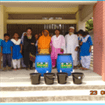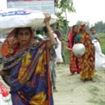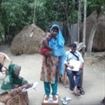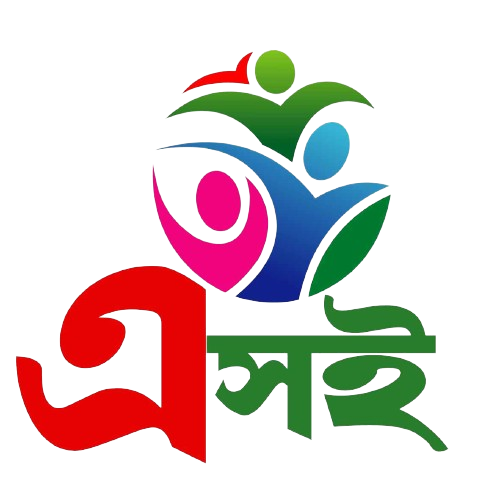| Project |
School feeding Program |
| Started on (Date) |
May’2015 |
| Phased out (Date) / Continuing |
June’ 2018 |
| Funded by |
Directorate of Primary Education of Bangladesh Government & WFP |
| Implementing Partner |
DPE and WFP |
| Working area |
MadarganjUpazila in Jamalpur District, (government Primary Schools 197, Ebtadayee Madrassas 07 and Primary Schools under ShishuKallayan Trust 01total 205 |
| Objectives |
-To increase enrollment and attendance of pre and primary School in the food insecure areas.
– To improve learning ability of the primary school children through deduction of micronutrient deficiencies.
-To enhance GoB Capacity to implement school feeding programme efficiently and effectively |
| Key interventions |
- # High energetic biscuits distribution,
- # Deworming tablets ensure uses to students,
- # Monthly and Quarterly meeting with teachers ,
- # Home visit for drop out students,
- # Courtyard meeting,
- # Vegetable garden in School,
- # SMC meeting
|
| Result of intervention |
- # Students attendance increased
- # Dropout is being reduced
- # Pass rate of students increased 10% than previous year
|
Impressive photographs (Project Image):


| Project |
Micro Credit Program |
| Started on (Date) |
1994 |
| Phased out (Date) / Continuing |
On going |
| Funded by |
Since 1994 to 2000 CORDAID-Netherlands then Own fund |
| Implementing Partner |
UnnayanSangha has been implementing individually |
| Working area |
Jamalpur and Sherpur districts |
| Goal |
To provide financial support to organize poor people with specific rules and regulation and the ensures sustainability of UnnayanSangha . |
| Key interventions |
- # Group Formation& Meeting
- # Savings Collection
- # Loan disbursement & collection
- # Homestead gardening
|
| Result of intervention |
- # Formed 541 groups
- # Unity among groups increased
- # Members knowledge on socio-economic issues improved
- # Group initiatives increased
- # Income of group members increased
|
| Project outcome |
- # Women’s have been involved IGA,
- # Homestead gardening has been increased,
- # All children go to School,
- # Child labor has been decreased
|
Impressive photographs (Project Image):



| Project |
Chars Livelihoods Program (CLP) |
| Started on (Date) |
2005 |
| Phased out (Date |
2016 |
| Funded by |
DFID&CLP |
| Implementing Partner |
UnnayanSangha(US) |
| Working area |
IslampurUpozila in Jamalpur District |
| Goal and Objectives |
To Improve the Livelihoods of over one million extreme poor households living on Island chars in north western Bangladesh |
| Key interventions |
- # Primary health care & family planning services
- # Social development group formation & development ,
- # ensure timely checking, counseling to pregnant and lactating mother,
- # IFA tablets distribution for pregnant, lactating mother & adolescent girls,
- # Assets purchase and assets transfer,
- # cattle rearing,
- # Training on homestead gardening,
- # training on local verity poultry rearing,
- # distribution of poultry feed,
- # plinth raising,
- # Installation of new Tube Well with platform,
|
| Result of intervention |
Improved awareness of people on their rights like-gender equity, health-hygiene, education, family planning, bad effect of early & multiple marriage, disaster preparedness and management, birth & marriage registration, water and sanitation, social ties and others socio-environmental issues. As a result they have been communicating with different GO-NGO and Private Service providers/facilities to get necessary services, financial capacity, nutritional status, education status of their child and overall health status have been increasing. |
| Project outcome |
The chars people especially the beneficiaries have been living safely than before in their homesteads with homestead vegetable gardening, plantation of food trees, using of water sealed latrine, tube-well for safe drinking water and social safety net, which increases their livelihoods security.
|
Impressive photographs (Project Image):




| Project |
South Asia WASH Results (SAWR) Program |
| Started on (Date) |
March’15 |
| Phased out (Date) |
June’ 2017 |
| Funded by |
DFID |
| Implementing Partner |
WSUP Bangladesh |
| Working area |
1.Jamalpur, 2.Sherpur, 3. Mymensing, 4.Netrokona, 5. Kisorgonj, 6. Norsiongdi, 7. Gazipur |
| Objectives |
To promote hygiene awareness and practices |
| Key interventions |
- # Coordination meeting with Head Teachers and UEOs,
- # Distribution of hand washing posters to disseminate reinforce So5 messaging,
- # Supports mother’s group sessions in the schools’
- # Support to Celebrate Annual Sports of School,
- # Soap campaign,
- # Conduct assessments in schools to identify needs and provide low cost hand washing devices,
- # Learning sharing workshop of little doctors,
- # Exchange visit of little doctors,
- # Field visit of GoB personnel
|
| Result of intervention |
- # They have been practicing hand washing with soap in regular basis,
- # Strengthen health clubs,
|
| Project outcome |
- Cordial support to school authorities make ensure smooth implementation programme activities
- Concern GOB Official involvement helps the smooth implementation of the programme activities
- Skilled Little Doctor Group
- WASH practices
|
Impressive photographs (Project Image):



| Project |
SHOUHARDO II Program |
| Started on (Date) |
1st faze 2006 -2010, 2nd faze 2011- 2015 |
| Phased out (Date) |
1st faze 2010, 2nd faze 2015 |
| Funded by |
USAID |
| Implementing Partner |
CARE Bangladesh |
| Working area |
Dewangonj, Islampur&Modergonj |
| Goal and Objectives |
Goal :Transform the lives of 370,000 Poor and Extreme Poor (PEP) households in 11 of the poorest and most marginalized districts in Bangladesh by reducing their vulnerability to food insecurity”.
Objectives:
- SO 1 – Livelihood: “Availability of” and “access to” nutritious foods enhanced and protected for 370,000 PEP households.
- SO 2 – Health, Hygiene and Nutrition: Improved health, hygiene and nutrition status of 281,000 children under 2 years of age.
- SO 3 – Empowerment: PEP women and adolescent girls empowered in their families, communities, and Union Parishad.
- SO 4 – Institutional Strengthening: Local elected bodies and government service providers’ responsiveness and accountability to the PEP increased.
- SO 5 – Disaster Management and Climate Change: Targeted community members and government institutions are better prepared for, mitigate, and respond to disasters and adapt to climate change.
|
| Key interventions |
- # Field crop production,
- # Comprehensive Homestead Development (CHD),
- # Fish Culture,
- # Income Generating Activities-IGA,
- # Vaccination Program,
- # Training on Capacity building of CHV,
- # Workshop with health & family planning department,
- # Mothers to mothers support group training,
- # World Health Day Observation,
- # Food/Ration distribution,
- #Youth Campaign,
- # Early Childhood Care and Development (ECCD),
- # CAP,
- # Leadership development training for VDC members,
- # UDCC meeting,
- #Open budget Meeting,
- # Training on Capacity building with UDV,
- # NFI distribution,
- # National Disaster Preparedness Day observation,
|
| Result of intervention |
- # Beneficiaries have been skilled about crop production and stories,
- # Women’s have been involved IGA
|
Impressive photographs (Project Image):



| Project |
Juvenile Justice Program(JJP) |
| Started on (Date) |
2002 |
| Phased out (Date) |
2013 |
| Funded by |
MnuserJonno Foundation (MJF) |
| Implementing Partner |
FIVBB |
| Working area |
All upozila in Jmalpur&Sherpurand Mymensing, Netrokona,.Kisorgonj, Tangail district |
| Goal and Objectives |
To strengthen children act and child protection through police department, local elite, NGO and with related administration . |
| Key interventions |
- # Mothers & Child group formation & meeting,
- # Task force meeting,
- # Meeting with DSS,
- # Training for risky children,
- # Life skill training,
- # Jail visit
|
| Result of intervention |
- # Children’s Have been skilled ,
- # Relationship have been increased children’s group leader & local administration and DSS,
- # Children’s involved with work after training.
|
| Project outcome |
- # no children in Jail,
- # Police department is positive roll play after arresting children
- # Children’s have been awarded about their rights
|
Impressive photographs (Project Image):





















